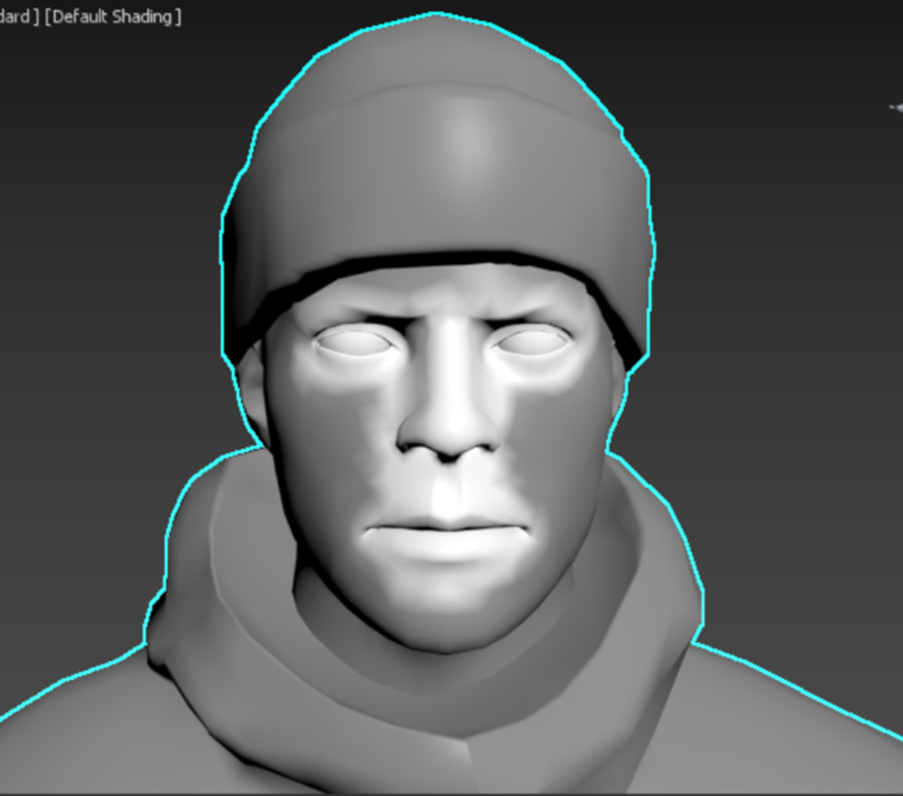The Four Fundamental Simplygon Tools for Automated Character Optimization
From triangle reduction to material merging, learn more about building an automated character optimization pipeline.

In this blog we will look at the four fundamental tools of building an automated character optimization pipeline. This includes triangle reduction, vertex weights, bone reduction, and material merging. An automated pipeline allows us to create LOD levels efficiently and effectively, reducing the manual effort required for optimization. It can also be used when developing game titles targeting multiple platforms, where each platform may have different performance requirements.
Automatically generate LOD models with Simplygon's triangle reducer
A game can contain hundreds of character models. To manually optimize each one of these models is time-consuming and labor-intensive. Simplygon's triangle reducer can automate this process, allowing you to quickly generate LOD models. This tool is the main workhorse of an automated character optimization pipeline.
A key feature which enables this automation of character optimization is the ability to preserve blend shapes and skinning information during the reduction process. Simplygon takes skinning data into consideration when reducing skinned models and allocate extra geometry in deformation zones such as joints. Simplygon's high quality reduction minimizes manual work required to fix issues that may arise from the optimization process.
Give your artists control with vertex weights
Switching to an automated pipeline can sometimes lead to a loss of artistic control. By incorporating vertex weights, you can give artists the ability to fine-tune the optimization process. This ensures that the final assets meet their creative vision while still benefiting from automation.
By painting important areas, such as the character's face, artists can maintain control over the optimization process and ensure that key features are preserved. This can also be used as a tool to address areas where problems occur, instead of manually fixing the LOD levels after automated optimization.

Reduce skinning influences with bone reduction
It is not just geometry that can have a performance impact. Complex character rigs can also contribute to performance issues, particularly when there are a high number of bones and skinning influences. With Simplygon's Bone reducer you can optimize the bone structure and reducing unnecessary influences, you can improve performance without sacrificing visual quality. Using bone reduction is especially important when porting to less powerful platforms. It can also be very powerful to optimize games with tons of characters on screen at once.
Save draw calls with material merging
Another way characters can impact performance is through the use of many materials with complex shaders. By reducing the number of unique materials used in a character, you can decrease the number of draw calls required to render the character, which can lead to significant performance improvements for distant LODs.
Simplygon's Material merging feature can be used in combination with the triangle reducer, allowing you to construct a character optimization pipeline where materials are merged after a certain LOD level.
Where to start building a character optimization pipeline?
Setting up an automated character pipeline can be a complex task, but breaking it down into manageable steps can help. Our suggestion is to start with testing out how Simplygon's triangle reducer works on your character assets in the DCC tool of your choice. Simplygon have a plugin for 3ds Max, Maya and Blender.
Once you have found some settings which work well you can save and share these with your team as customized Simplygon pipelines. The next logical step is to automate the optimization, so no human needs to click around in the user interface. Automating your asset pipeline can start very simple as a batch script that processes all models in a folder, and as your needs grow, you can expand the automation to include more complex workflows.
If you are interested in learning more about automated character optimization, check out our other resources on the Simplygon website where you can also request an evaluation license.

